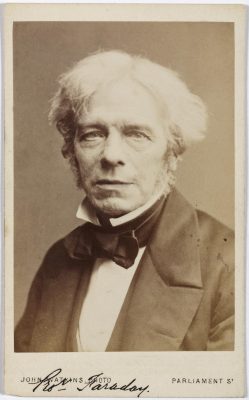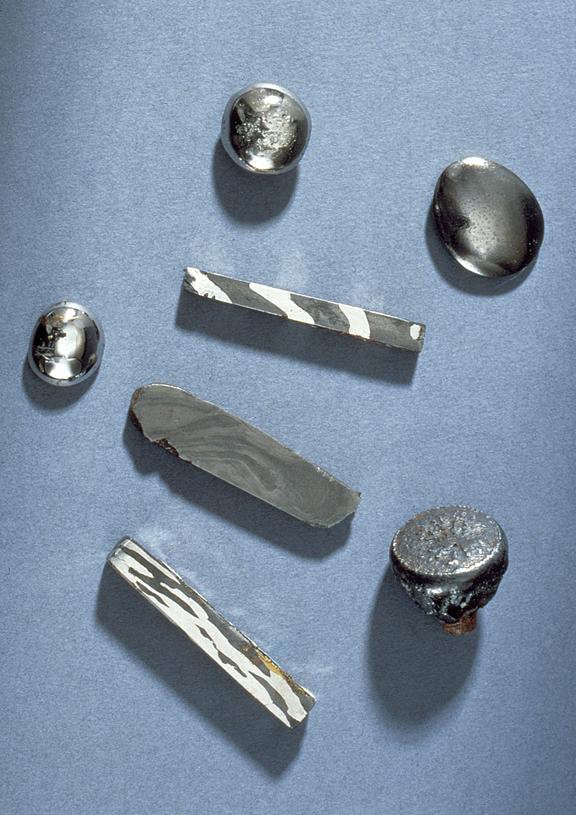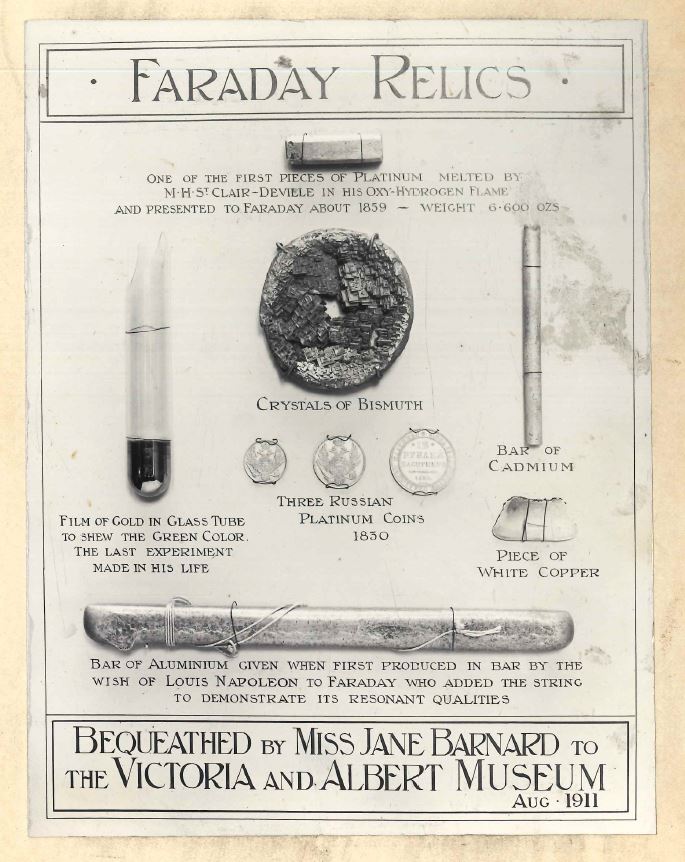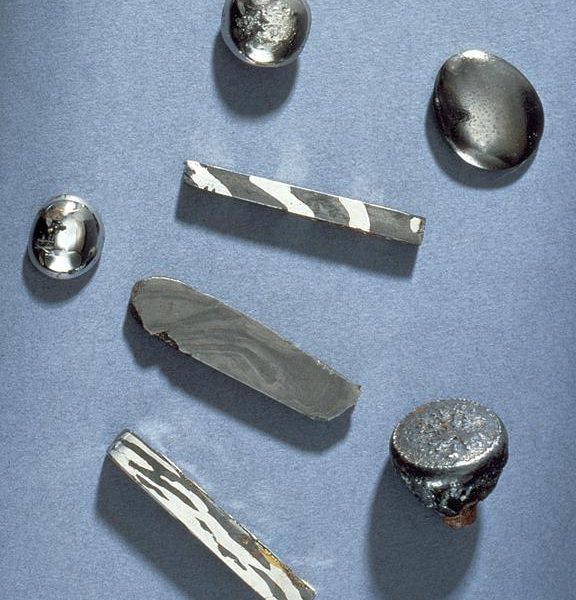When working with objects, it is always an immense privilege to see things that are directly from the history that we are researching. From everyday things to specialist one-of-a-kind pieces of scientific

equipment, historical artefacts feel like a direct line to the past. Why else do we flock to museums in our millions to see them? This sentiment, or emotional response, is enhanced when we know the owner or user of such objects. This isn’t just a pair of glasses, these are John Dalton’s glasses. This isn’t just a space capsule, this is Tim Peake’s Soyuz capsule.
This was the feeling that I was almost overwhelmed by when reviewing the objects related to Faraday in the chemistry collections.
Faraday is heralded as one of the most famous scientists in history despite his humble origin as the son of an apprentice blacksmith on the edge of London, then the largest, richest and most powerful city in the world. Faraday attended Humphrey Davy’s lectures at the Royal Institution while training as a bookbinder. After Davy damaged his eyes in an explosion during his chemical research, Faraday was recommended to him as an amanuensis (assistant) in 1813.
Shortly after this one of Davy’s assistants was dismissed for striking another colleague and Faraday took up the position. Faraday worked for Davy until the latter’s death in 1829, with their relationship oscillating between patronage and exploitation. Davy put Faraday to work on several projects that would utilise his talent; the founding of the Athenaeum Club attempts to improve optical glass and the protection of the copper bottoms of naval vessels from corrosion while at sea.
Faraday was frustrated with the amount of time these projects consumed and the lack of practical success. In the 1830s Faraday was widely regarded as Davy’s successor in both scientific and public life and he was fully committed to the encouragement of state utilisation of science. Providing advice on a wide range of topics from lighthouses to art restoration, Faraday defined state interaction with scientific knowledge during a profoundly formative-era for state-science relations. The formally employed scientific advisor to the government, the Astronomer Royal George Airy, told Faraday “we trouble you as a universal referee or a character-counsel on all matters of science.”
Despite the absorption of his time on tasks and experiments set by Davy,

Faraday built up his reputation as a chemist at the start of his career. In the late 1810s Faraday conducted important metallurgical work on improving steel alloys with the surgical instruments-maker James Stodart. Faraday and Stodart addressed themselves to the specific question of ‘artificially’ improving cutting edges and decreasing corrosion by adding alloys to steel.
A few years after this work, Faraday isolated and identified benzene in June 1825 from the oily residue derived from the production of illuminating gas, giving it the name bicarburet of hydrogen. Benzene is a significant chemical, used in the manufacture of more complex hydrocarbons to produce plastics, of which billions of kilograms are made today.
Faraday’s alloys and chemical samples are all kept in his chemical chest and is one of the treasure of the Science Museum Group’s collection. It also contains gifts to Faraday from other chemists. William Hyde Wollaston who discovered the elements palladium and rhodium sent samples of these to Faraday, who stored them with his own metallurgical samples.
These precious metals offered to Faraday are held by the museum in our safe and include platinum coins from Russia, samples of cadmium and crystals of Bismuth which were also all owned by Faraday. On display in the Making the Modern World gallery there is a bar of aluminium given to Faraday by Napoleon III. Until the electrolytic process for its extraction was discovered, aluminium was an expensive curiosity and used to make expensive jewellery.
Faraday’s life has always been regarded as highly romantic in its rise from humble origins to a hero of scientific endeavour, his eminent discoveries and intellectual labours have become classical in their simplicity, perfection and universal significance. The chemical chest and other items belonging to Faraday were bequeathed to the Museum in 1908 and 1911 by members of his family and were displayed as relics of Faraday’s life and work.

There is a noble tradition of science biography stretching back to the 1600s and there has been a recent revival in biography as a historical practice both in universities and museums. But while curators are keen to feed a fresh hunger to understand the making of science through the making of scientists, we should always be cautious in how we come to remember and beatify scientific-lives.
The history of science is filled with fantastic individuals and their narratives are fascinating. Yet focusing too much on the heroes of science can blind us to contributions of assistants and technicians, something that Faraday himself would surely have been keenly aware of.
